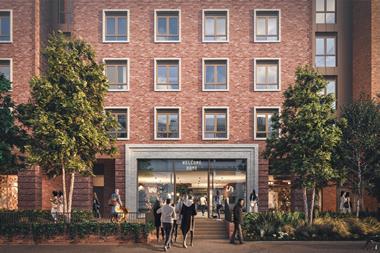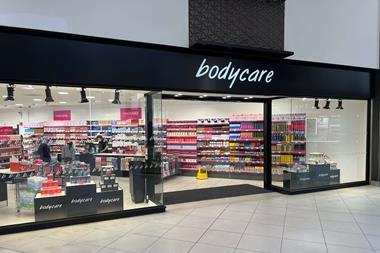It’s that time of year again. Flip-flops are being dug out of the wardrobe to have last year’s sand brushed off as Brits prepare for their two weeks in the sun. But while at one point this might have meant retailers having to watch helplessly as months of savings winged their way out of the country, the hard times are causing many holidaymakers to rethink their travel plans and take their hard-earned breaks in Blighty.
And for retailers in the towns most likely to benefit this news will be a ray of sunshine. Some figures already suggest that footfall in coastal towns has held up better than in the rest of the country, as the effects of a resurgent stay-at-home-holiday culture appear to take shape.
For a number of reasons, coastal towns seem to be in a bubble. In retailing terms they are a bit of an anomaly with their own quirks and rules and only a relatively small number of brands have proved to be a perfect match for these towns. Demographics tend to differ from other types of location; weather plays a much more important role and recent press reports even seem to suggest that the housing markets in these towns might prove more resilient than elsewhere.
“There seems to be a potential revival in coastal towns,” says Andrew Bradley, partner at surveyors Hartnell Taylor Cook. “A lot more people are having multiple holidays and one of these tends to be in the UK. You go to a lot of these towns and there are many more cranes than there used to be. There are the young trendy towns that are big on watersports, such as Newquay. People go there to be seen.”
It has not been the best year for travel agents. Brits will be feeling a distinct lightening of their wallets this summer and an unprecedented rise in fuel prices is making travel more expensive than ever. Combine this with a strong euro and the farce over Heathrow’s Terminal 5 opening and the case for travelling abroad is weaker than ever.
The silver lining is for Britain’s£85 billion-a-year domestic tourism industry – the fifth largest industry sector in the UK. Across the board figures for holidaymakers choosing to stay at home are on the increase, with Lastminute.com revealing that overall domestic reservations in 2008 were up 16 per cent compared with last year.
The golden rule of retail is to get people through the door and footfall figures from footfall data firm Springboard suggest that coastal towns are getting better at this. Stats taken from a selection of coastal spots over the past two years reveal that in June this year these towns recorded a 4.9 per cent growth in footfall, compared with just 1.3 per cent in all towns and cities. In May, when visitor numbers to all towns and cities fell 0.7 per cent, coastal towns’ footfall increased 2.7 per cent.
Springboard marketing director Diane Wehrle explains: “These towns certainly have the opportunity to recapture the footfall and spend they’ve lost to people previously going abroad in the summer.”
When you think of holidaying on Britain’s coast, images of wind-whipped seafronts, handkerchief hats and overpriced donkey rides tend to leap to mind. But the UK coastline is, in fact, home to some sophisticated and affluent towns – and retailers are starting to cotton on to this. There has been a quiet renaissance in seaside retailing as developers and retailers have started to realise the potential spend to be tapped into – especially if they can succeed with the younger shopper.
“One of the concerns we’ve had is that you’ve only got half a catchment because on the other side is the sea, but we’ve moved on from that,” says King Sturge director Charles Miller. “The UK has become a lot cooler. We’ve got places such as Bournemouth that are realising there’s a market out there and they’re doing things like creating their own surf reefs. We’re starting to get a more aspirational collection of retailers coming in.”
Despite Britain’s apparent lack of seaside appeal, there is actually a great deal of variety among the coastal towns along our shoreline. When you’re talking about an island with nearly 12,000 miles of coastline, there is bound to be a lot of towns by the sea. By no means are all of these pleasure destinations.
Many of Britain’s longer-established seaside towns, such as Margate, have been in long-term decline because their tourism offer has failed to evolve to meet changing consumer tastes. But there are other places, in Wales and on England’s South Coast, offering stunning and incredibly affluent assets – if not the weather. Around Salcombe and East Portlemouth in Devon, for example, the average house price is almost£500,000, with the same kind of affluence to be found dotted all along the South Coast. And with this great spectrum of wealth, tourist offering and property values, naturally the retail is equally varied. While there are high street mainstays that are constants throughout UK retail, there are also brands that have very carefully chosen their sites because of the unique local catchment and the type of tourists the towns can attract.
Not only do towns vary hugely economically, coastal towns also attract a great diversity in the age ranges they pull in. Compare sleepy Southwold in Suffolk – which feels as though it has been frozen in time from the 1950s – with Newquay in Cornwall and you will see retail markets that are poles apart. While some of Britain’s coastal towns are places for people to retire to and live the quiet life, others are where their grandchildren head to go surfing and clubbing.
The brands you’ll find in these towns are an interesting reflection of this. In the towns with a more youthful showing, brands such as Oakley, Animal, O’Neill, White Stuff and Jack Wills have proved a big hit. While all of these brands also have significant showings inland, they are in a unique position in retail terms in that they are appealing to young Brits on holiday as well as the often wealthy catchment around the town.
But coastal towns are also very popular with elderly consumers. Towns such as Eastbourne and Bournemouth have proved very attractive places for retirement because of the better weather and slower pace of life. And again this brings unique advantages.
Most of the people who have retired and settled in these places have paid off most of their debts and are free from many of the money draining commitments the next generation are tied to, such as child raising and mortgages and so are in a position to spend more readily. And with improving healthcare, people are living longer and are therefore continuing younger shopping trends for longer. Miller says: “Your 50s are becoming your 40s and your 40s your 30s and a lot of retailers are benefiting from this.”
Even traditional bucket and spade resorts that are perceived to have seen better days are enjoying a retail renaissance. In Blackpool, developer Modus is extending the Houndshilll shopping centre, which will be 400,000 sq ft (37,160 sq m) once completed and include a Debenhams store. Modus managing director Nigel Poad says: “Blackpool has always suffered from a general perception of being a stereotypical seaside town, so its retail offer has very much lagged behind.”
As well as taking more holidays at home, many Britons are also considering UK seaside towns as inviting places to move to or buy a second home in. With the downturn well and truly on us and whispers of a recession becoming more of an audible chatter, any safe haven for retailers will be a blessing. While coastal towns will not be immune to the effects of wider economic strife, they might just hold up better.
The rules of retailing still apply, of course, but the fact that consumers are feeling the heat means they will need to adapt and cut back. Holidaying at home could be one of the few silver linings for retailers to come out of the downturn.
As dark clouds gather over the economy, the rising number of Britons eschewing foreign holidays for a break on their own coastline could be a silver lining for retailers, says Ben Cooper.


























No comments yet